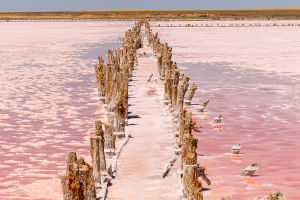A canyon is a unique geological formation characterized by a valley with steep slopes and a depth that exceeds its width.
Typically, canyons develop in areas where tectonic movements cause the uplift of the ground, and the valley slope comprises hard rock. When the uplift speed of the land is in coordination with the down-cut of the flowing water, a canyon is most likely to form.
Contrary to popular belief, the world's largest canyon is not the Grand Canyon in Arizona, USA, but rather China's Brahmaputra Grand Canyon. With a length of 504.9 kilometers and an average depth of over 5,000 meters, it is the world's largest Grand Canyon.
The formation of canyons is mainly due to two factors: the uplift of the earth's crust and the incision of flowing water. It is a result of the synergistic effect of the earth's internal and external geological forces. Additionally, the lithology and structural conditions of the area also affect the formation of canyons.
Areas with complex lithology prone to large fractures, where the two sides are easy to stabilize and preserve, and where fractures make it easy for the flowing water to cut downwards, are likely to form valleys. Therefore, the formation of a canyon is the outcome of the comprehensive action of multiple factors, which determines the richness and diversity of the canyon.
On Earth, canyons are among the most breathtaking landscapes in nature. Here, we will introduce some of the world's most famous canyons.
Grand Canyon
The Grand Canyon, located in Arizona, USA, is one of the seven natural wonders of the world.
With a length of 446 kilometers, a width of 29 kilometers at its widest point, and a depth of 1.6 kilometers, the Grand Canyon is formed by the long-term erosion and cutting of the Colorado River. Its peculiar landforms are breathtaking, attracting numerous tourists every year.
Colca Canyon
Colca Canyon is one of the primary tourist destinations in Peru. For the adventurous traveler, crossing the river in this canyon is an irresistible challenge. The climate in the canyon varies greatly, with the temperature in the morning ranging from 1 to 2 degrees Celsius and rising to 25 degrees Celsius at noon.
Great Rift Valley
The Great Rift Valley in East Africa is the largest fault zone on the world continent, resembling a huge scar from satellite photos. The Great Rift Valley widens at a rate of a few millimeters to tens of millimeters every year. Some scientists predict that if this speed continues, it will be torn apart into a new continent in 200 million years.
Gland Canyon
Located in northern Arizona, the Gland Canyon is one of the longest and deepest canyons globally, stretching 446 kilometers long and 1.8 kilometers deep.
The natural landscape is incredibly spectacular and one of the most famous natural landscapes in the United States.
Additionally, many Aboriginal historical sites in the Gland Canyon, such as stone walls and petroglyphs, provide valuable information for scientists studying local human history.
The aforementioned canyons are only a few of the world's famous canyons, each with its unique landscape and geological features, attracting countless tourists and scientists for study and appreciation.
It is worth mentioning that although these canyons are breathtaking in the eyes of humans, they are a product of the earth's long history and natural forces. Therefore, it is crucial to cherish and protect these natural wonders.


